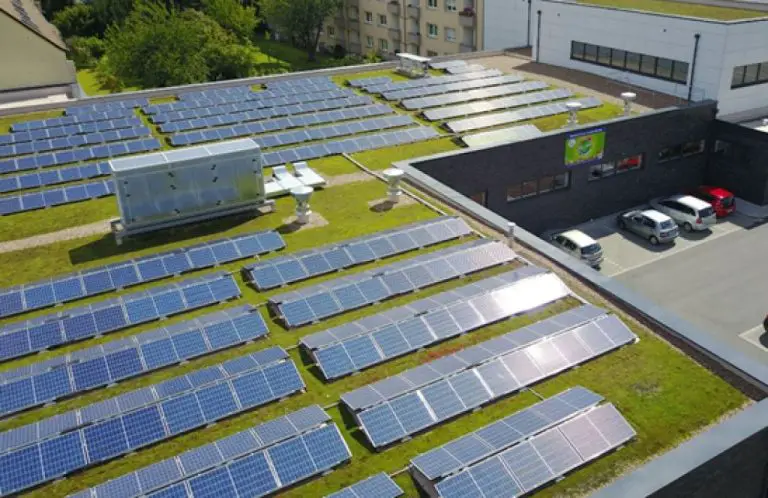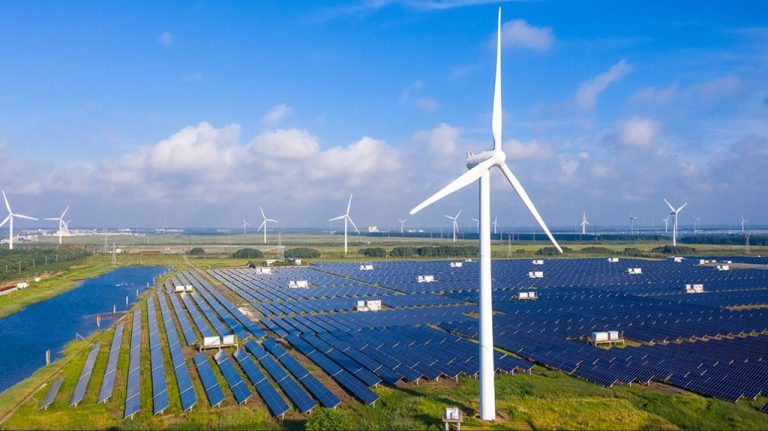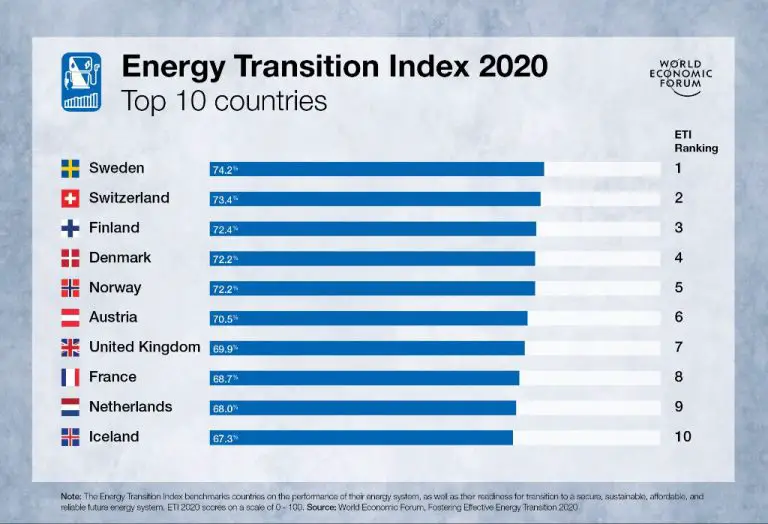How Do You Use Alternative Energy In A Sentence?

Alternative energy refers to energy sources that are derived from natural processes and continuously replenished. These renewable energy sources include solar, wind, geothermal, biomass, and hydropower. Unlike fossil fuels like coal, oil, and natural gas, alternative energy comes from resources that are regenerative and sustainable. Some key examples of alternative energy sources include:
- Solar power harnesses energy from the sun using photovoltaic cells or solar thermal collectors.
- Wind power utilizes wind turbines to generate electricity.
- Hydropower taps flowing water like rivers to produce power.
- Geothermal energy uses underground heat from the earth’s core.
- Biomass converts organic matter like plants into fuel.
Alternative energy provides a clean and renewable way to meet energy needs while reducing dependence on finite fossil fuel reserves that produce greenhouse gas emissions. Interest and investment in alternative energy continues to grow as costs decrease and technology improves.
Discuss Growing Interest
There has been a marked increase in interest and investment into alternative energy sources like solar, wind, and geothermal in recent years. According to the International Energy Agency (IEA), renewable energy capacity is expected to grow by over 2,400 gigawatts between 2022-2027, equal to the entire power capacity of China today. The IEA reports that global renewable electricity capacity could rise to 4,500 gigawatts in 2023. This rapid growth demonstrates the rising priority that alternative energy solutions have gained as an integral part of plans to transition away from fossil fuels and build more sustainable energy systems.
Environmental Benefits
Alternative energy sources like solar, wind, geothermal and hydropower have significantly less environmental impact than burning fossil fuels like coal, oil and natural gas. Unlike fossil fuels, renewable energy sources produce little to no greenhouse gas emissions, which mitigates climate change. The EPA reports that generating renewable energy allows us to “[d]iversify energy supplies and reduce dependence on imported fuels” while also “[r]educ[ing] some types of air pollution” (source). The Union of Concerned Scientists likewise notes that increased use of renewable energy decreases demand for fossil fuels, thereby “lowering the prices of and demand for natural gas and coal” (source). Overall, transitioning to alternative energy sources provides considerable environmental advantages over continued reliance on fossil fuels.
Energy Independence
Using domestic renewable energy sources, like solar and wind power, helps provide energy independence for a nation by reducing the need to import fossil fuels from other countries. Energy independence is an important goal because it provides greater energy security and protects a nation from the volatility of fossil fuel prices and supply disruptions.
By generating energy from local renewable resources, rather than importing oil and gas, a country can become more self-reliant for its energy needs. For example, an increase in U.S. solar and wind energy would reduce the reliance on imported oil and natural gas, moving towards energy independence.
Alternative energy sources also often have more stable and predictable costs than imported fossil fuels. Local renewables help prevent a nation’s economy and national security from being negatively impacted by external energy price shocks and supply instability. Therefore, greater use of domestic alternative energy is critical for achieving true energy independence and security.
Cost Savings
Alternative energy sources like solar, wind, and geothermal often require significant upfront investments, but can lead to cost savings over time compared to continual use of fossil fuels. According to the International Renewable Energy Agency, renewables are already the cheapest form of newly built power generation in most of the world today (Source). Though initial costs may be high, operating costs for renewables are minimal since the “fuel” sources like sunlight and wind are free.
In contrast, fossil fuels like oil, coal and natural gas require continual extraction/purchase to power plants, so operating costs never go away. A report by the Natural History Museum shows that transitioning to net zero emissions globally using mainly renewable sources is estimated to ultimately cost 25% less than continuing high emission levels long-term. Though short-term costs may rise during the transition, eliminating fossil fuel operating costs over decades can lead to substantial cost reductions.
For consumers, installing solar panels or geothermal heat pumps often requires high upfront costs, but can pay off over 5-10+ years through energy bill savings. Though individual renewable systems have a price tag, eliminating fossil fuel energy bills over the system’s lifetime significantly reduces costs. Transitioning society’s energy infrastructure to renewables will require large near-term investments, but the long-term savings from free “fuel” sources like sun and wind are substantial.
Challenges
While renewable energy sources offer clear environmental and energy independence benefits, they face adoption challenges. The main problems faced by renewable energy include high upfront costs, intermittency issues due to reliance on weather conditions, and the need to upgrade grid infrastructure https://www.trvst.world/renewable-energy/challenges-for-renewable-energy/. The intermittent nature of renewables like solar and wind makes energy storage critical for grid stability, but storage technologies are still expensive. Fossil fuels remain cheap in many places, making the initial investment in renewable energy infrastructure prohibitive.
Despite recent cost declines, solar panels, wind turbines, and other renewables require large upfront expenditures. Integrating higher levels of renewables also needs grid flexibility and transmission infrastructure upgrades. These challenges can make the economics of renewables difficult, especially when competing with low natural gas prices. However, continued technology improvements and economies of scale coupled with supportive government policies can help overcome these obstacles.
Government Support
Governments around the world are providing various incentives to accelerate the transition to renewable energy sources like solar, wind, and geothermal. According to the International Energy Agency, over $1.3 trillion has been allocated by governments globally since 2020 to support investments in clean energy amid the global energy crisis.
In the U.S., federal tax credits and cash grants are available to help offset the cost of installing renewable energy systems. The federal government offers a 26% tax credit for installing solar panels and other residential renewable energy technologies through 2034 under the Inflation Reduction Act passed in 2022. This can save homeowners thousands of dollars on the cost of going solar. The Department of Energy also provides grants, loans and other financing options for renewable energy research, development and deployment, such as through the Solar Energy Technologies Office.
Many U.S. states, cities and utilities also offer additional incentives like rebates and net metering programs to further support renewable energy adoption. With strong policy support, governments aim to accelerate the transition away from fossil fuels and toward a clean energy future.
Notable Projects
There are several major alternative energy projects being developed around the world. The Dogger Bank Wind Farm off the coast of England is expected to be the world’s largest offshore wind farm once completed. With a capacity of 3.6 GW, it will provide renewable energy to 4.5 million homes. The Baltic Power Offshore Wind Farm being built off the coast of Poland is anticipated to produce 1.2 GW of energy upon completion in 2027. The massive Tunur Solar Park in India spans 5,384 acres and will have a capacity of 2 GW, making it one of the largest solar parks globally.
Consumer Adoption
Everyday consumers have a few options for adopting alternative energy in their homes and lives. The most popular is installing solar panels, which an increasing number of homeowners are doing. The share of U.S. homeowners with solar panels has risen from 4% in 2016 to 11% in 2022. Solar panels can be purchased upfront or financed through loans or leases. Consumers can also purchase solar generators as a portable way to capture solar energy for use anytime. For rural residents, small wind turbines can generate electricity too.
Purchasing green power through a utility is another way to support renewable energy, even if you can’t install solar panels where you live. Some utilities offer the option to purchase renewable energy credits or subscribe to a green power program. Smart thermostats and energy efficient appliances also help by reducing overall energy consumption.
While upfront costs can be a barrier, government tax credits and incentives are making alternative energy more affordable for consumers. Continued adoption will require education and outreach to highlight the benefits and available options.
Conclusion
The use of alternative energy from renewable sources such as solar, wind, and hydro has seen impressive growth over the past decade. This growth is likely to continue, driven by falling technology costs, energy security benefits, environmental advantages, and government policy support. While challenges remain in transitioning towards renewable energy on a large scale, particularly integrating variable sources into the grid, the future is bright for continued expansion of alternative energy. Over the next decade, renewable energy is projected to provide over 30% of global electricity generation as costs continue to fall and adoption spreads. Alternative energy has the potential to significantly reduce carbon emissions while creating jobs in emerging clean tech industries. With climate change concerns mounting, renewable energy can offer a sustainable and clean solution to meet the world’s future energy needs while ensuring environmental and economic prosperity.





